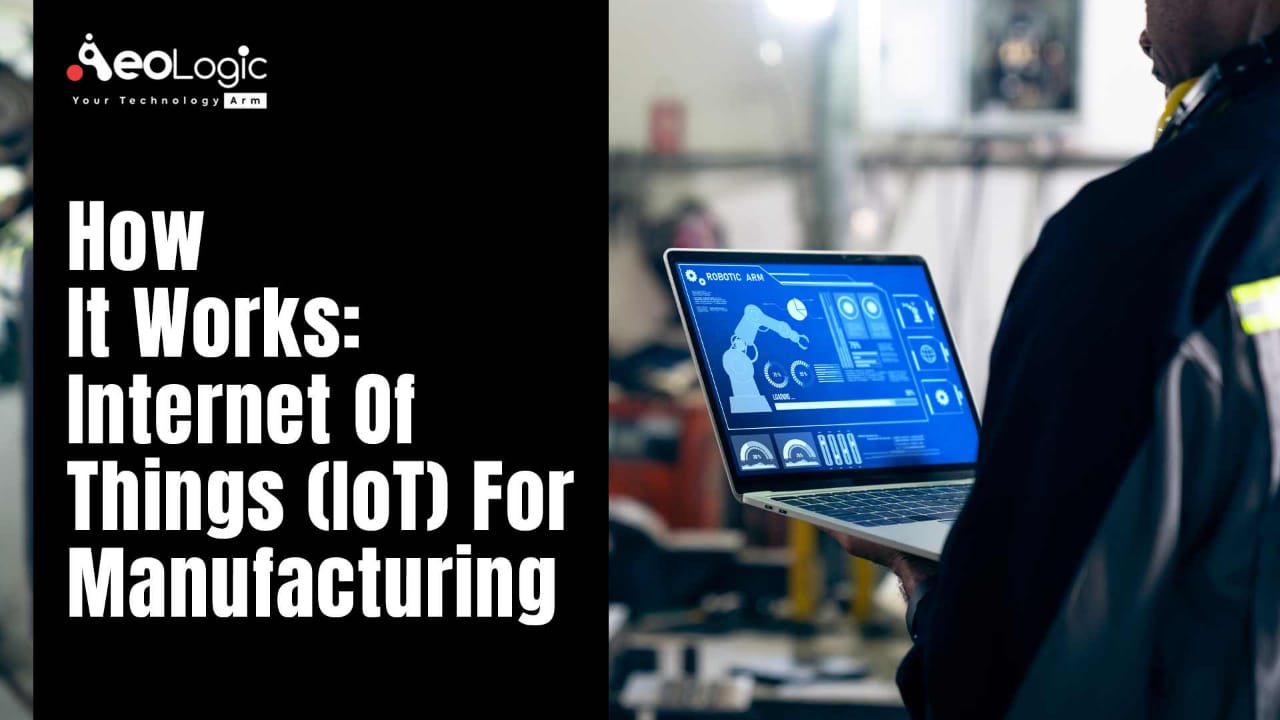Using IoT technology means that customers’ feedback can be incorporated into the product design process, resulting in better products and better customer service. In the world of manufacturing, it is playing a vital role in optimizing operations. In this blog, you will learn how the internet of things works and what are its benefits.
So let’s begin!
Internet Of Things For Manufacturing
Internet of things (IoT) has the potential to increase global productivity up to around 30 percent by 2025. This could translate into an economic value of more than 11 trillion dollars. Industries like manufacturing are embracing the potential of the internet of things (IoT). Many manufacturers in today’s time are already processing and supervising control systems with connectivity.
The internet of things (IoT) for manufacturing is a family of solutions that combines the capabilities of analytics, cognitive computing, and the Watson internet of things platform to drive operational efficiencies across the factory value chain.
Benefits Of The Internet Of Things For Manufacturing
The solution of the internet of things (IoT) benefits the manufacturing industry in three main ways:
1) It helps plants get 100 percent efficiency out of their equipment by identifying and solving issues before they cause delays.
2) It makes processes and operations cognitive, so plants can produce maximum quality and yield from raw materials and manufactured components.
3) It helps plant managers better manage resources, improve workers’ expertise and provide a safe working environment.
Advances in these three areas define a new wave of connected manufacturing, one that revolves around things processes, and people.
Also read our blog on “The role of automation in the future of manufacturing“
How Does Internet Of Things Works?
Let us understand it with an example:
Josh is a plant manager for an aircraft manufacturer. He oversees the production of key components for large commercial aircraft, and his top priorities are meeting production deadlines and producing aircraft parts safely and efficiently.
One of his biggest clients needs to move up its delivery date by three months. Josh and his team use the internet of things for manufacturing, which will help them deliver earlier than originally planned.
Predictive Maintenance
An equipment analytics solution identifies problems with equipment health and performance before they happen. This will prescribe maintenance procedures so josh’s team can avoid equipment failures and downtime, getting maximum effectiveness out of their equipment.
To ensure the quality standards of the components are met along the production line. Josh uses a quality analytics tool to identify variability in the manufacturing process in real-time. This allows equipment operators to make adjustments to the process parameters based on plant conditions that could affect the quality of production. By monitoring quality in real-time, josh’s team can avoid producing faulty components, ultimately saving time and money.
Safety Of The Workers
Another priority josh has to account for, under a rush schedule, is the safety of his plant workers. The cognitive IoT platform enables employees’ safety technology that monitors things like exposure to toxic gas or extreme heat, operating dangerous machinery, and open flames. In the helmets and wristbands of the plant workers, sensors are available that provide real-time alerts on working conditions. Activating preventative measures if physical well-being is compromised or safety procedures have not been applied.
The platform allows josh to track all of this internet of things data in real-time. Hence, he can be confident that the production equipment tools and employees will be able to safe and secure.
Use Of Data
Once the completed aircraft from josh’s plan is put to use, those manufactured parts continue to generate data over time. Designers and engineers can use this data to make improvements and updates to various parts in the future. Additional sensors also make it possible for josh’s plan to offer cognitive solutions to the airline. To enable ongoing predictive maintenance of each and every machine. Using the power of the internet of things (IoT) paired with cognitive computing and analytics.
Conclusion:
To sum up, implementing the internet of things for manufacturing will enable manufacturers to run their operations efficiently and effectively. This is the way businesses should operate in today’s modern time. Implementing technology like the internet of things for manufacturing will definitely give your manufacturing unity a competitive advantage in the market. If you have any further questions regarding this, we are at your disposal. Are you looking to implement the internet of things for manufacturing intelligence? If yes, so, please feel free to contact us at support@aeologic.com






